
Boo at the Zoo: Animals Get Their Spook On
Boo Zoo Album Intro Meerkats
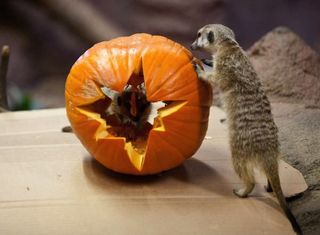
Halloween isn't just for trick-or-treaters these zoo animals also get to celebrate the spooky holiday. They don't need costumes, but they do get treats, usually in the form of meat- or veggie-filled pumpkins courtesy of their keepers.
Here are some "Boo at the Zoo" participants from zoos around the country.
Lion cub Denver Zoo
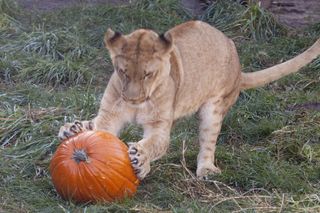
A lion cub playfully pounces on a pumpkin at the Denver Zoo.
Meerkats Chattanooga Zoo
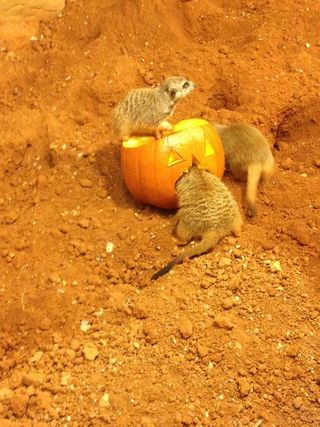
Meerkats chow down on a pumpkin at the Chattanooga Zoo.
Asian small-clawed otter National Zoo
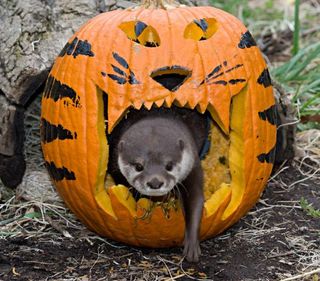
At the National Zoo in Washington, D.C., an Asian small-clawed otter explores the new orange addition to its habitat, and it is delighted to find its one of its favorite treats, meal worms, inside.
Asian small-clawed otters (Aonyx cinerea) are the smallest of the world's 13 otter species. They live in freshwater streams, rivers, and creeks as well as coastal regions and are native to Indonesia, southern China, southern India, the Philippines, and Southeast Asia.
Fishing cat National Zoo
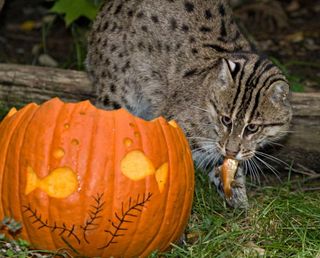
This fishing cat enjoyed casting its line in the pumpkin fish bowl in its habitat and caught a goodie.
Sign up for the Live Science daily newsletter now
Get the world’s most fascinating discoveries delivered straight to your inbox.
Fishing cats are small cats native to south and southeast Asia. Their short, stout legs are built for swimming rather than running or climbing.
Madagascar hedgehog tenrec National Zoo
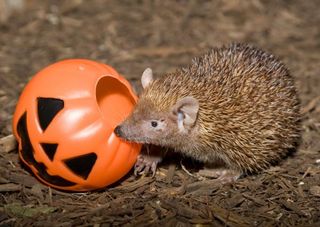
A small Madagascar hedgehog tenrec in the National Zoo's Small Mammal House gets a head start on the trick-or-treating festivities taking place at Boo at the Zoo this weekend.
Despite the name and close resemblance, this species isn't actually related to the hedgehog.
Prevosts's squirrel National Zoo
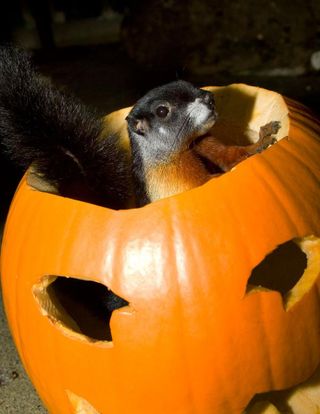
The Prevost's squirrel isn't spooked by jack-o-lanterns this Halloween.
Also known as the tricolored squirrel, the Prevost's squirrel (Callosciurus prevosti) is strikingly colored, with black, white, and reddish-brown bands down the length of the animal. Prevost's squirrels live in Southeast Asia and eat fruit, nuts, seeds, flowers, insects, and bird eggs.
Meerkats Houston Zoo
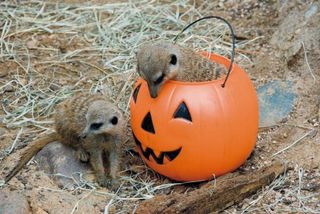
Meerkats at the Houston Zoo climb into a plastic pumpkin filled with some of their favorite treats, crickets and mealworms.
About 12 inches (30.5 centimeters) long, meerkats (Suricata suricatta) have a tan or gray coat, with a pale underside. Their eyes are ringed with black, and their tails have a black tip.
Meerkats live in groups of two or three families, with as many as 30 individuals. The groups are called mobs. Throughout the day, adults take turns serving as sentries, looking out for predators. When a potential threat is seen, the sentinel will make an alarm bark, and the meerkats will flee to their underground burrows.
Orangutan Houston Zoo
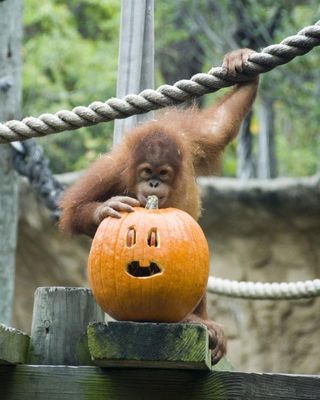
Indah the orangutan inspects a pumpkin full of raisins and other fruits and veggies.
Orangutans are the world's largest tree-dwelling animal and Asia's largest primates. These primates are endangered as their forest habitat is destroyed.
Tiger Houston Zoo
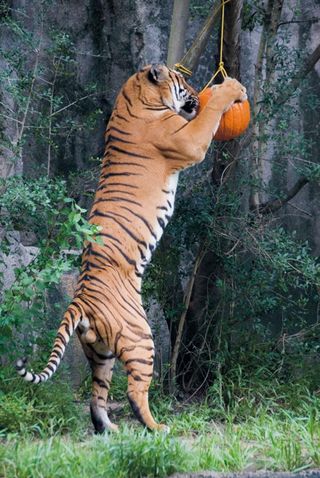
Tiger are often presented with their pumpkins whole because they like to chew on them, but often keepers will fill them with meat.
Tigers (Panthera tigris) are the largest of the Great Cats; there are nine subspecies of tiger, three of which are extinct.
Hippopotamus Los Angeles Zoo
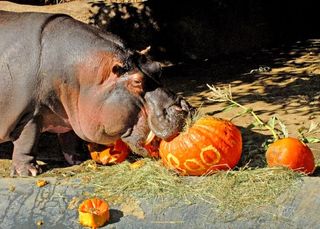
A hippopotamus at the L.A. Zoo chomps down on a pumpkin.
These barrel-shaped behemoths wallow in the water by day and graze on land at night. Hippopotamuses can live up to 45 years in the wild, and sometimes longer in captivity.












